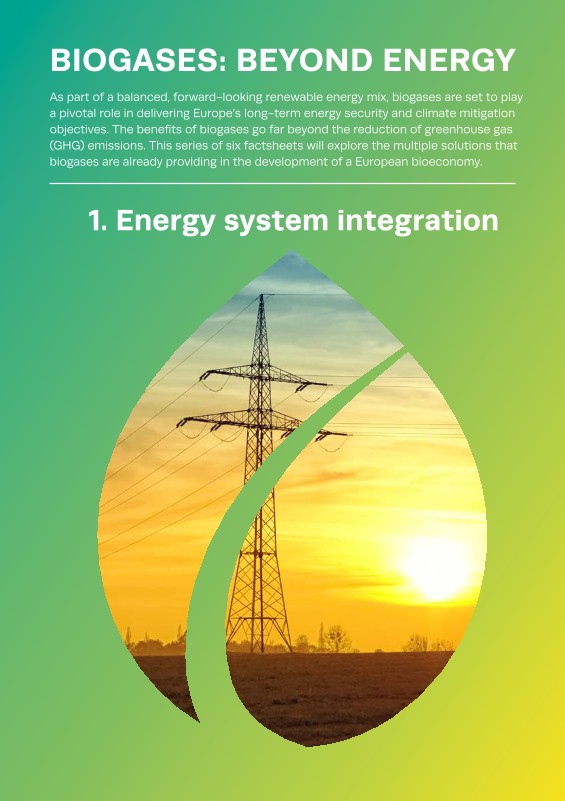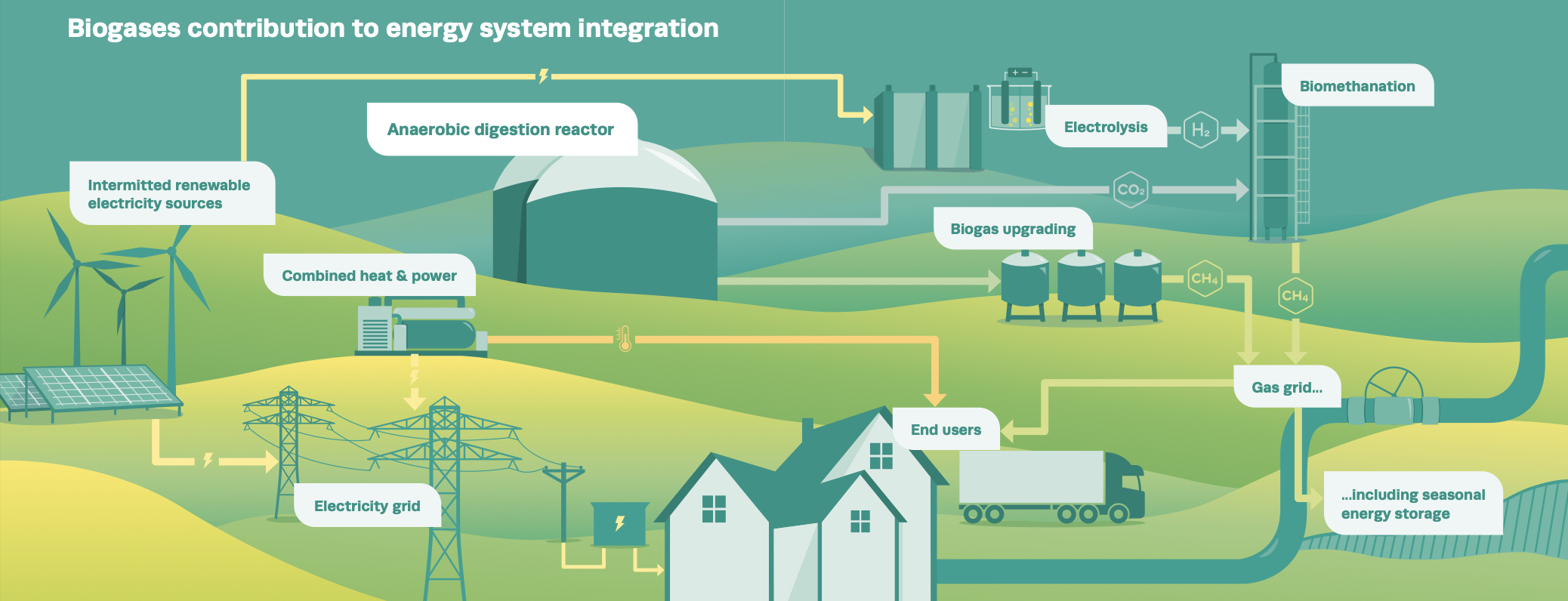Biogases will play a pivotal role in delivering Europe’s long-term energy security and climate mitigation objectives, as part of a forward-looking and balanced renewable energy mix. Besides, their benefits go far beyond the reduction of greenhouse gas (GHG) emissions. That is why attention to this source of renewable energy and scientific developments regarding biogas is increasing.

This factsheet is the first of the new European Biogas Association (EBA) information campaign “Biogases: beyond energy”, which is focused on exploring the multiple solutions that biogases are already proving to develop a European bioeconomy. In total, there will be six factsheets throughout the year.
The list of factsheets:
- Energy system integration – available now
- Regenerative agriculture – available in April
- Transport – available in May
- Heating – available in September
- Industrial uses – available in October
- Sustainability – available in November
Let’s talk about the first document “Energy System Integration”, which discovers the role that biogases play in ensuring a fully flexible energy system of the future.
To begin with, biogas ensures the flexibility of the system.
The construction of energy storage facilities to better meet demand remains an urgent issue. Currently, it is important to ensure the cooperation of different energy sectors to guarantee the stability and efficiency of the system.
Biogas and biomethane can be produced at a relatively constant pace and then used to generate electricity as needed, making it possible to offer dynamic electricity production that can accommodate fluctuations in electricity demand. This promotes grid stability and provides additional options for seasonal energy storage.
Biogas and biomethane are important sources of flexibility in the energy system. They contribute to all energy outputs – electricity, heat and transport – and can support the further integration of variable renewables via three main pathways:
- Cogeneration or biogas-CHP is allow the simultaneous production of electricity and heat (hot water or steam) and can be an element of system balancing due to its flexibility.
- Bio-methanation. Surplus electricity from the power grid is converted into hydrogen, which is then combined with the biogenic CO2 to produce biomethane. Finally, we will receive biomethane, which we can pump and store in gas transportation networks.
- The upgrading of biogas to biomethane. Biomethane can completely replace natural gas using existing infrastructure, equipment and end-use technologies.

The factsheet also showcases two biogas plants already contributing to the energy system flexibility and presents recommendations on how to facilitate system integration (ENGIE in France (with an annual production capacity of 27 GWh) and NawaRo in Germany (which generates 9 million kWh of electricity annually).
Moreover, biogas is the cheapest and most scalable form of renewable gas available today. It is a dispatchable energy carrier and as such can be deployed to balance intermittent renewable energy generation.
Also, biomethane (upgraded biogas) can directly substitute natural gas and it can be stored and deployed across the whole energy system, using existing gas infrastructure and end-use technologies.
Read more about the information campaign at the link.
Download the first factsheet “Energy system integration” here.